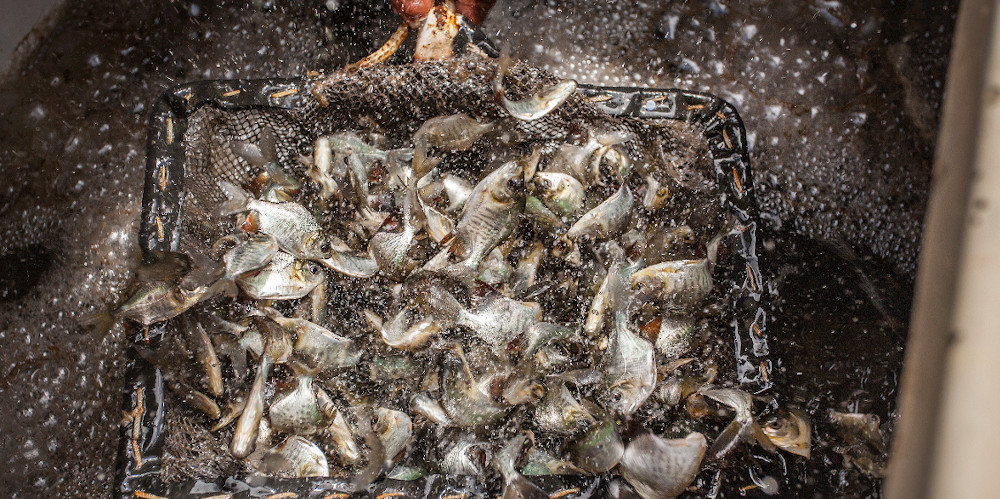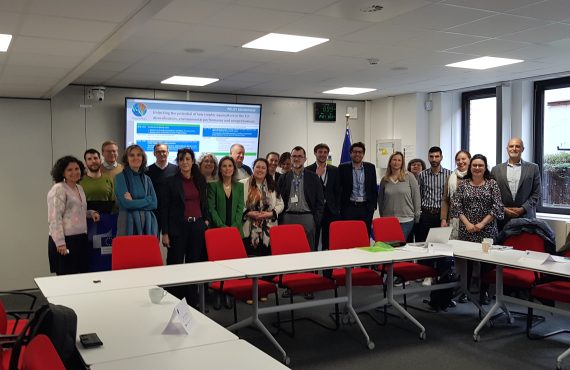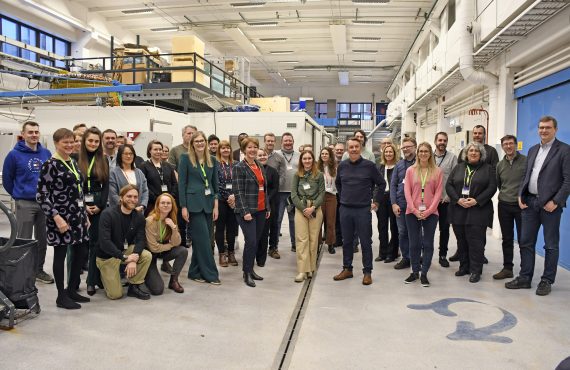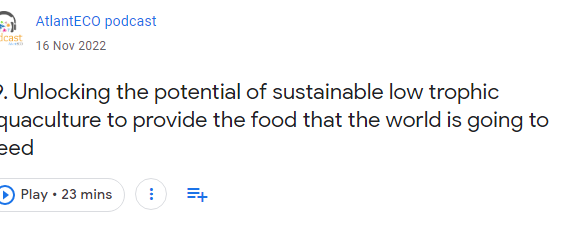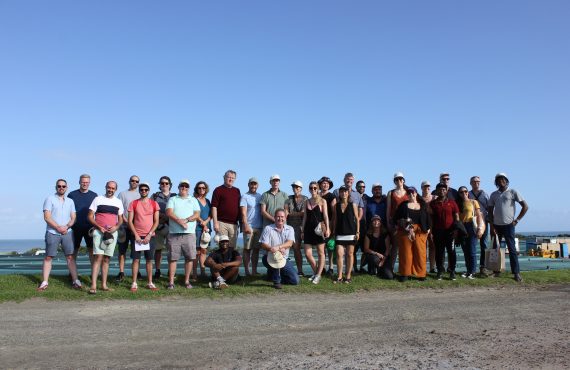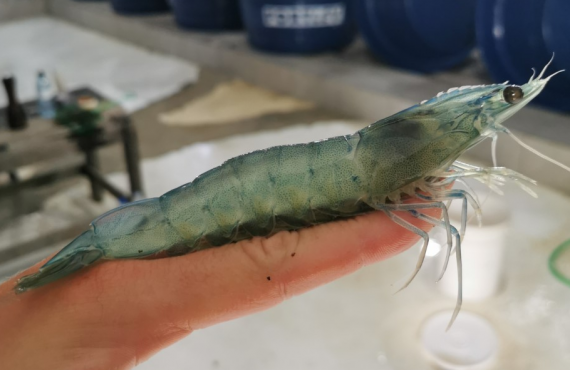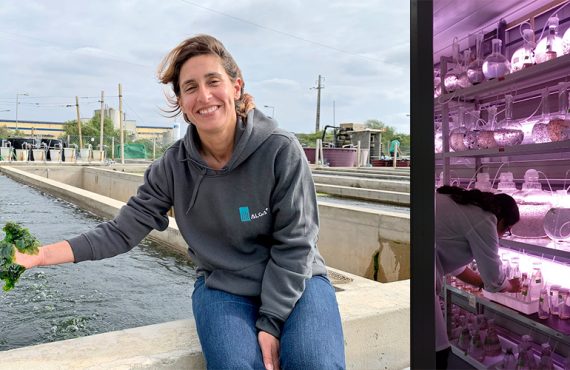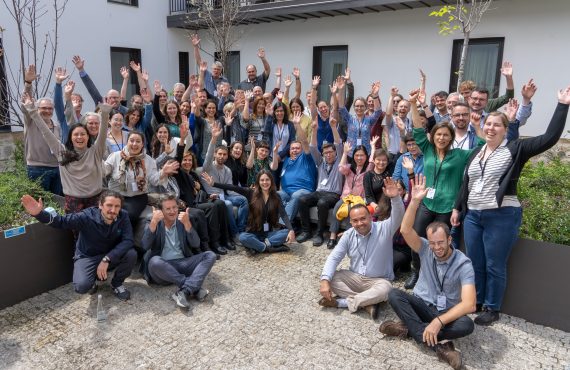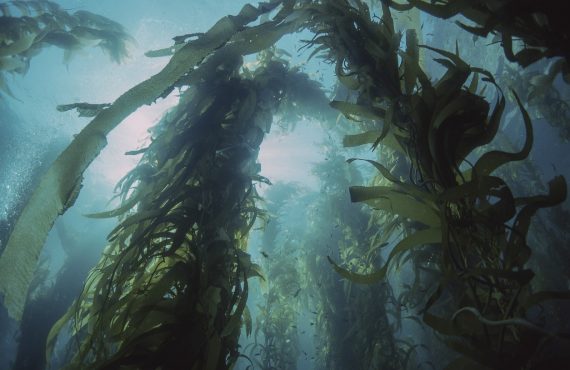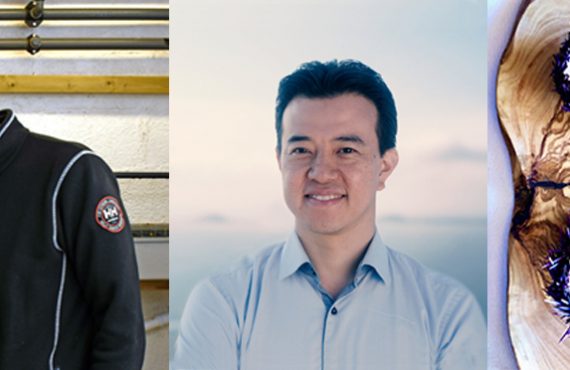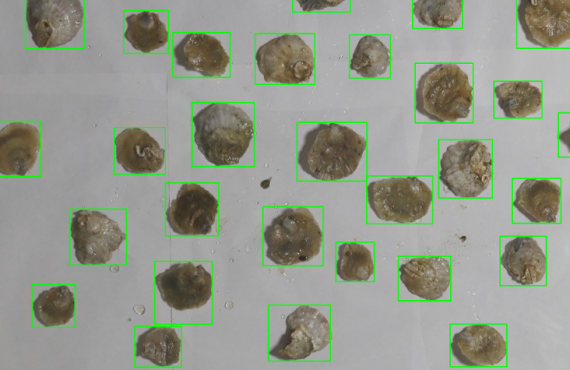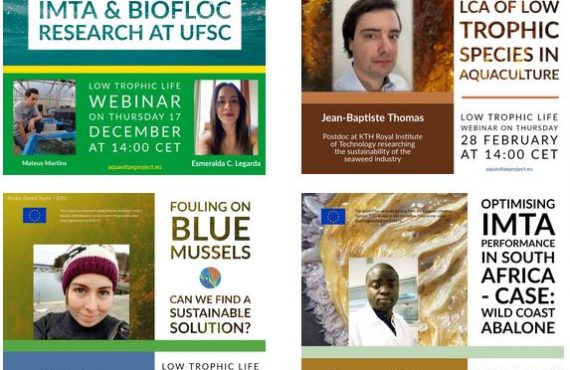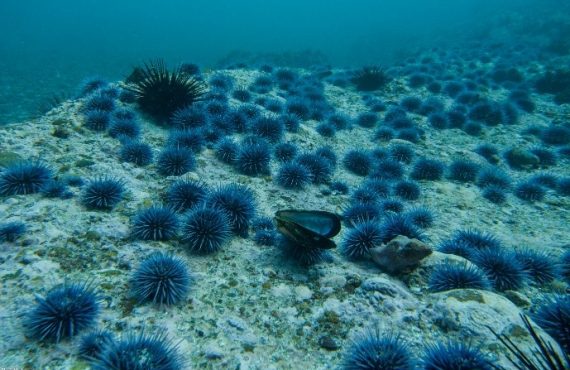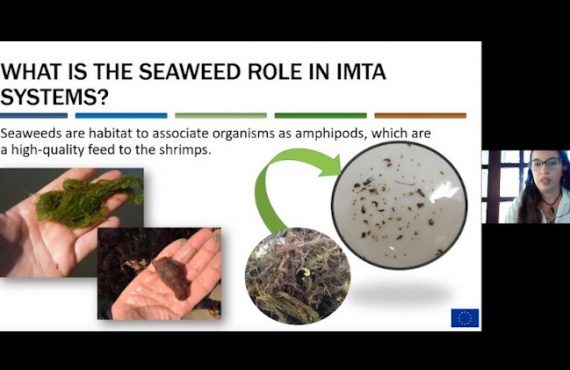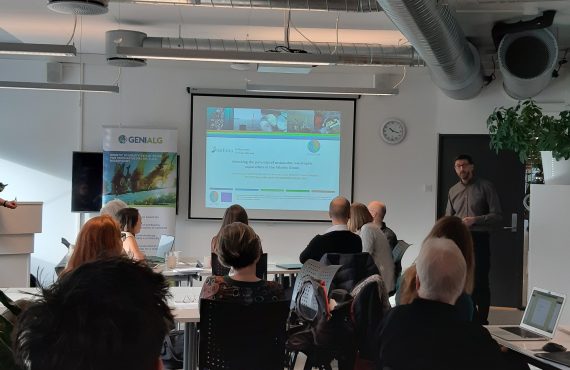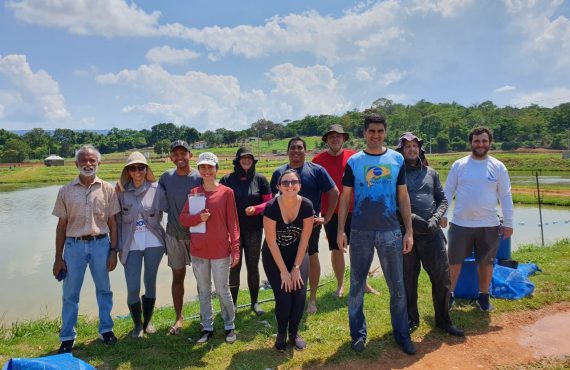Tambaqui fingerlings. Jefferson Christoffoletti, EMBRAPA.
Arapaima gigas, known locally as pirarucu, is the largest scaled freshwater species in the world and a strong candidate for aquaculture in Brazil. Alongside this giant of the Brazilian rivers, tambaqui (Colossoma macropomum) is the second freshwater species cultivated in the country, with strong relevance for local communities but also throughout the country. Both species face knowledge gaps that hinder the scalability of production activities. AquaVitae works to enhance the knowledge on methods to reproduce pirarucu in captivity, study the development of a protocol to produce triploid tambaqui, and models to estimate the different intermuscular bones in families of the later species.
On the 3rd of June, the second meeting of the AquaVitae case study on freshwater fish was held by EMBRAPA, having the participation of representatives of aquaculture companies Piscicultura Raça (Canabrava do Norte-MT), Piscicultura Fazenda São Paulo (Brejinho de Nazaré-TO), Piscicultura Água Limpa (Figueirópolis-TO) and Fazenda Hidrobios (Palmas-TO), together with researchers from Universidade Estadual Paulista Julio de Mesquita Filho (UNESP), Nofima and CETMAR.
While the meeting was taking place, an experiment testing GnRHa slow-release implants in pirarucu was taking place at EMBRAPA facilities, while preliminary results on colour changes and ovary development were being presented to stakeholders. While the response to the hormonal treatment was apparently not optimal to obtain spawnings, the preliminary observations indicate that the chosen approach is safe for broodstocks, the observation of ovary development along the trial is working well, and monitoring of couple reproductive behaviour was being recorded daily. The samples collected will be further analysed (sexual steroids and gonad histology) and certainly will enlighten the impacts of the hormonal treatments in the reproduction of pirarucu. The participation of stakeholders in EMBRAPA projects has already contributed an increased the number of reproductions in farms, with cannulation techniques to identify sex and check gonad maturation being already adopted.
In the case of tambaqui, the work is focused on the production of triploid sterile offspring and on the characterisation of intermuscular bones. Triploid tambaqui shall offer economic and environmental benefits. For the industry, triploid fish has the potential of reaching a larger size and thus offer higher production yields at harvest. At the same time, farm escapees shall not reproduce in the wild, which otherwise could result in hybridisation with the natural stocks and pose a risk to the genetic diversity of the species. Researchers have focused on the application of pressure shocks to tambaqui eggs to induce triploidy offspring. So far, two experiments have been finalised. Although hatching and larval survival was achieved in most treatments, results in polyploidy induction rates are yet to be analysed. Further trials should occur in the next reproductive season and should advance with growing fish to the adult commercial phase.
Currently, intermuscular bones in tambaqui impede the development of processing activities. The analysis of the growth of these bones, as well as the development of models to detect possible patterns, will contribute to spot the boneless specimens. The team has detected similar patterns in certain regions and families, and boneless specimens that can occur naturally will be searched using ultrasound techniques along the project.
Despite the COVID-19 impact on Brazilian society, industry participants deemed the work as relevant and suited to be transferred to the sector in the following years.



